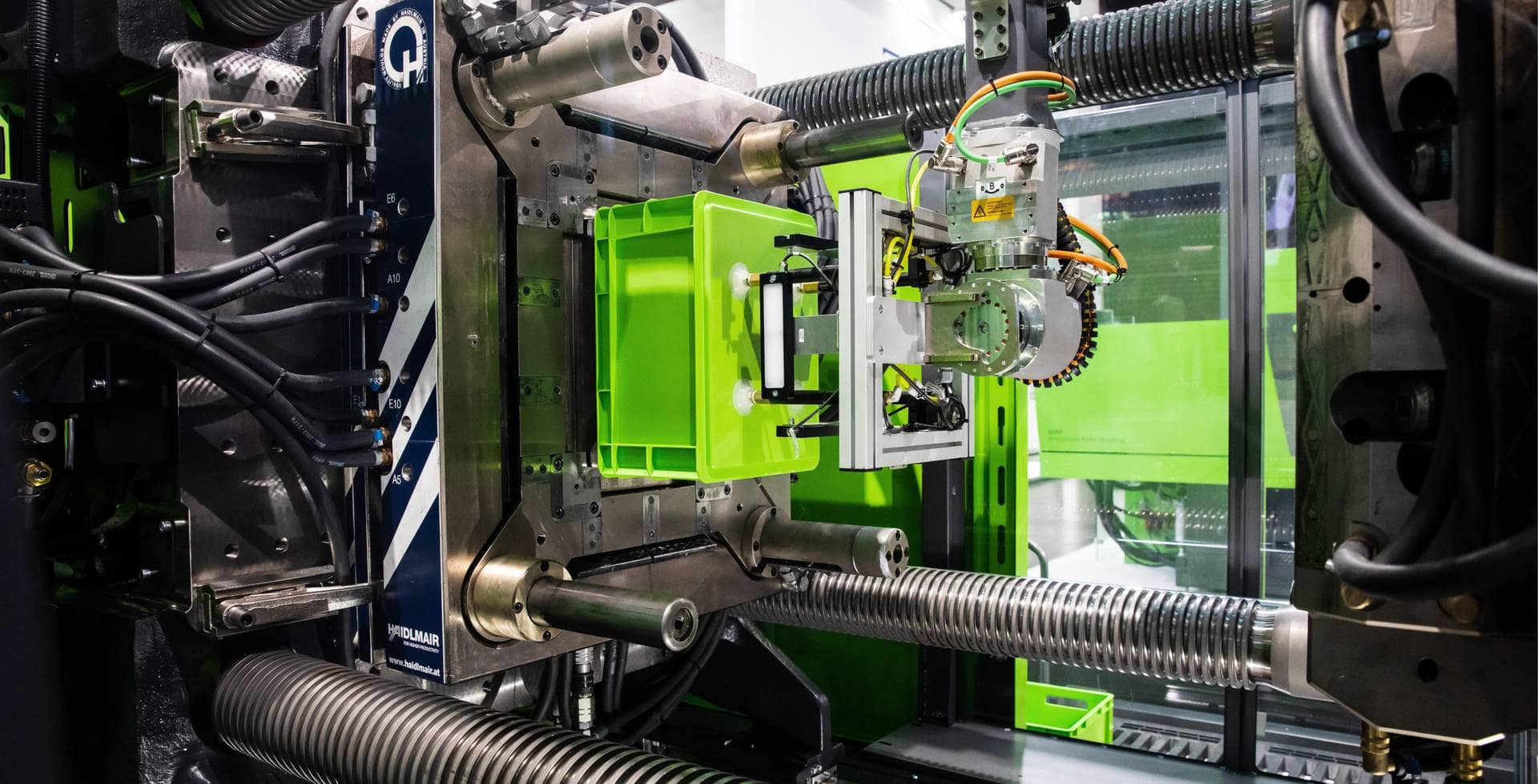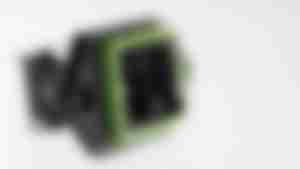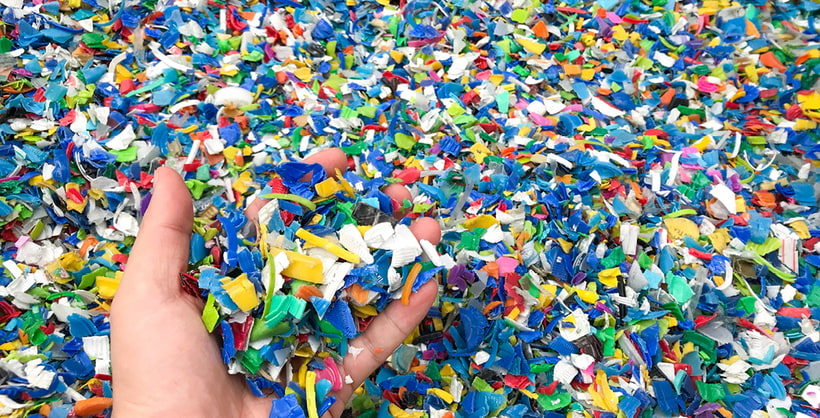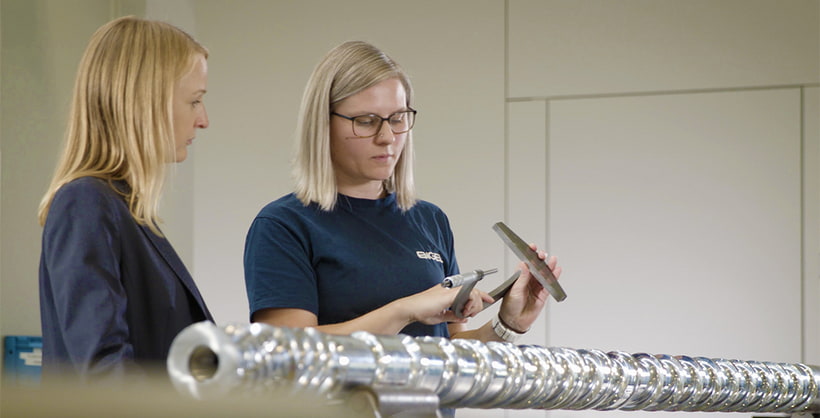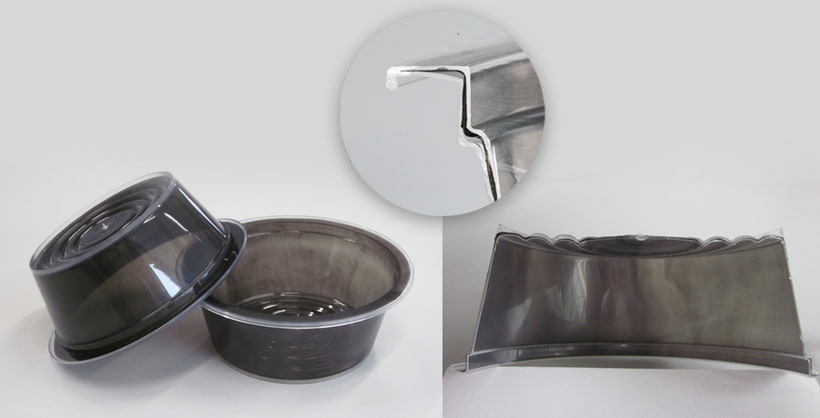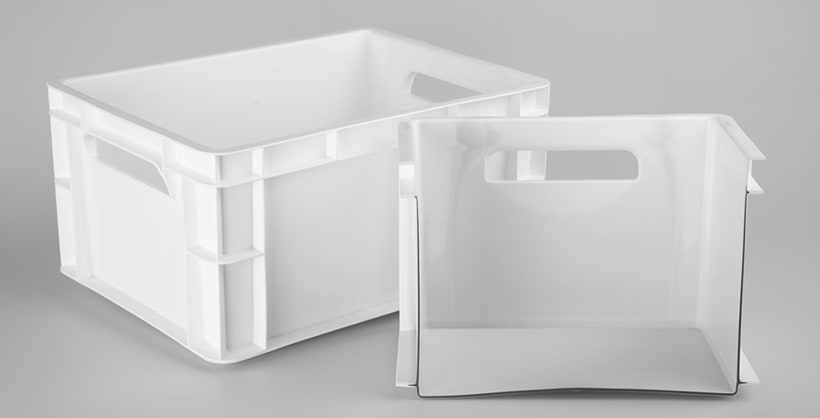Processing of plastic recyclates with the dosing method
The use of recycled plastics will increase, not least due to regulatory requirements. Sandwich components, which consist of recycled plastic waste at their core, make an important contribution to the circular economy. ENGEL's skinmelt process, a technology for processing of plastic recyclates with the dosing method enables high recycled content even with complex component geometries. At the same time, the process is also highly efficient and economical. ENGEL is cooperating with the Institute for Polymeric Materials and Testing at the Johannes Kepler University for the research and development of the new technology. The future will see an increase in the recycling of plastics.
An example from the logistics industry was chosen for a series of tests: Due to their geometric shape, transport boxes represent a particular challenge for sandwich injection moulding. Nevertheless, ENGEL achieves a recycled material content of more than 50 percent with the new skinmelt process. Both the virgin material and the recyclate are polypropylene. Due to the purity of variety, even a sandwich product, such as a transport box, can be recycled at the end of its useful life.
Clear and space-saving process
Processing of plastic recyclates with the dosing method using ENGEL's skinmelt process - in contrast to conventional coinjection - brings the two melts together even before injection. The virgin material (the skin material) reaches the cavity first. The recycled PP flows in and displaces it. The core is filled with recycled material while the virgin material is pressed against the wall. The amount of recycled material depends on the geometry of the moulded part and the filling pattern of the cavity. The injection position plays a major role, as does the viscosity ratio of the skin and core material.
In our search for alternative 2K injection moulding technologies, we were convinced by the new ENGEL skinmelt process. We see the faster start-up process and the uncomplicated shifting of the skin/core ratio as clear benefits. The absolutely consistent repeatability, even with fluctuating regeneration properties, is impressive. We are convinced that we have chosen the right path in order to continue to do justice to the issues of sustainability and recycling.

Compact solution for production with recyclate
Thanks to the high repeatability of the process, ENGEL skinmelt ensures dimensional accuracy and stability of the product even with high recycled content. For processing of plastic recyclates with the dosing method, ENGEL has developed a compact manufacturing solution based on a duo two-platen injection moulding machine. On the duo 3660H/1560W/450 combi, on which skinmelt was presented for market launch, the second plasticising unit, which is responsible for the skin material, is positioned at an acute angle. It is located above the horizontal injection unit. This is where the recyclate is melted. This ENGEL design guarantees a small footprint..
In addition, the injection moulding machine has a clear visualisation and animation of the entire process in the CC300 control of the injection moulding machine. The proportion of recyclate can be optimised particularly well by simply adjusting the mixing ratio.
Processing of plastic recyclates with the dosing method: sandwich components with up to 50 % recycled material in core
Test result with transport boxes from the logistics industry
- A test of processing of plastic recyclates with the dosing method result shows the determined force-displacement curves, the maximum forces achieved and the resulting compression until the respective maximum force is reached. The graph shows the mean value from three tests.
- Interestingly, those boxes that consist exclusively of recycled material achieve by far the highest maximum force and compression values. However, both the course of the force-displacement curves and the extent of the standard deviation of the compression values show that considerable scattering of the properties must be expected when using recycled plastic waste.
- In comparison, the trials with boxes consisting entirely of virgin material show almost congruent curves for the three trial runs, and the resulting standard deviations are small.
- The skinmelt boxes show a slight tendency towards higher dispersion, analogous to the boxes made only of recycled material, but there is no loss in terms of the tolerable maximum force.
- The fact that the apparently higher load-bearing capacity of the recycled material is not more clearly reflected in the stability of the skinmelt boxes is most likely due to the low proportion of recycled material in the stability-providing reinforcing ribs. These represent the flow path end and are therefore predominantly filled with skin material, which explains why the stability of the skinmelt boxes is comparable to the stability of transport boxes produced entirely from virgin material.
- Conversely, this means that a less efficient and correspondingly cheaper recyclate could also be used as a core component for the production of the stacking boxes examined - at least with regard to the stacking properties.
The tests carried out confirm the suitability for use of the transport boxes produced in the skinmelt two-component process. In order to be able to finally assess the product safety, further tests were carried out, in particular on the impact and long-term use properties.

ENGEL meets the global challenges for circular economy
ENGEL worked with partners to present the new process. The mould construction specialist for storage and logistics containers HAIDLMAIR provided the mould. Grüner Punkt - Duales System Deutschland cooperated with ENGEL in terms of recyclate. From household waste collected in the yellow bins or sacks came the PP regranulate of the Systalen brand. This was sorted and then reprocessed according to type. In order to keep plastics in closed cycles, it is important to use recycled material much more widely. This is possible with the skinmelt process.
Would you like to know more about the skinmelt process?
We will be happy to advise you.
More about our products and solutions from the article
Circular Economy
We develop technologies for the sustainable production of plastic products
Digital Solutions
Higher process stability when processing recyclates thanks to iQ weight control
Multi-component injection moulding
Produce parts more cost-effectively thanks to innovative multi-component injection moulding

